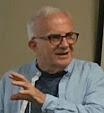For many people in today’s world, even in the church, talk about the Holy Spirit carries just about this level of importance. If it is thought of at all, it is considered little more than an inside joke and as little understood. It has been called the “poor relation” of the Trinity, a bit of an embarrassment to modern minds.
In the long history of the church, on the other hand, Pentecost was and is considered the third great festival of our faith. It brings to fruition and makes real the work silently begun at Christmas and declared to the world at Easter. It celebrates the gift of the Holy Spirit, the birth of the church on earth, and the gifts of the Spirit given to us for the transformation of the world. The Holy Spirit is God’s way of being “present” now. It is “in” the Holy Spirit that we discover both our unique individuality and our deepest communion with others, our freedom, and our most intimate love. The fruits of the Spirit, Paul wrote to the Galatians, are love, joy, peace, patience, kindness, goodness, fidelity, gentleness, and self-control.
In the creeds, the Holy Spirit is worshipped as “the Lord, the Giver of Life.” The symbols of the Spirit are many; fire, dove, and wind are among the most well-known. Calder’s title for his Philadelphia mobile may have been more of a double entendre than he intended. For in 1951 he wrote, “The underlying sense of form in my work has been the system of the Universe or a part thereof. This is a rather large model.” Twenty years later, he emphasized, “I work from a very large live model.” That, my friends, sounds like the Spirit to me!
Faith in a Minor Key













